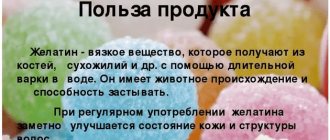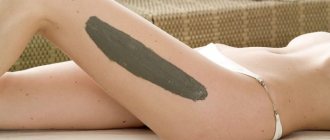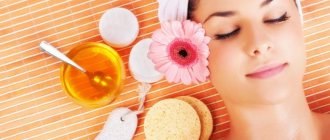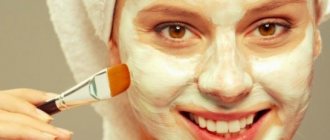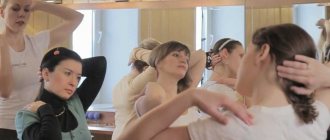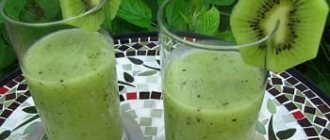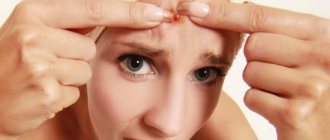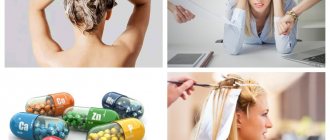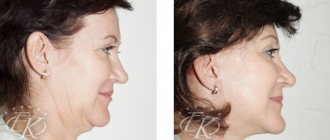Yeast is an effective remedy against the signs of early aging. They are suitable for any skin type and effectively eliminate not only the first wrinkles, but also acne, as well as unhealthy complexion. The main advantage of masks made from them over other compositions is that along with the rejuvenating effect, there is also a healing effect. They can be used at home, since their preparation does not require special expensive ingredients.
The vitamins B, D, H, E and C included in the composition have a moisturizing and tonic effect. They normalize metabolic processes and blood circulation in cells.
- For all skin types
The undeniable benefits of yeast face masks
The vitamins, amino acids, minerals and other beneficial elements contained in yeast have a comprehensive rejuvenating, cleansing, antibacterial effect, penetrating deep inside to nourish skin cells, moisturize, improve blood circulation, and tighten the oval of the face.
They are suitable for almost everyone and are an excellent alternative to visiting a beauty salon and expensive procedures.
Why yeast
A yeast face mask can save beauties from many skin problems: wrinkles, acne, oily sheen, pigmentation, clogged pores. This is the most universal remedy in folk cosmetology. The fungal substance contains a lot of components, each of which can bring invaluable benefits to the skin, even individually.
Useful composition
Why is a face mask with yeast so valuable? Here is a list of the main beneficial substances that make up the dough.
- Vitamin B1. Normalizes cellular metabolism, makes tissue elastic.
- Vitamin B2. Accelerates the process of cell renewal and regeneration.
- Vitamin B5. Strengthens skin immunity and protects against harmful external influences.
- Folic acid. Relieves inflammation, dries out rashes, and inhibits the spread of acne.
- Amino acids. Act as a catalyst for the process of producing your own collagen.
- Vitamin E. Awakens frozen cells, which helps smooth out wrinkles and creases, strengthening the facial contour.
- Niacin. Gives the skin an even, healthy and fresh tone.
- Biotin. Intensively moisturizes and nourishes dry skin, eliminates flaking.
- Minerals. Normalize the amount of sebum produced.
Video on the topic Elena Malysheva about the benefits of yeast for facial skin
5 Skin Problems That Yeast Solves
Using a product such as a yeast face mask at home, you can solve a number of skin problems. No expensive cosmetics, no salon procedures. Here are five main tasks that yeast solves.
- Fat content. Yeast helps tighten pores and suppress the activity of the sebaceous glands.
- Transitional age. Opara deeply cleanses the skin, drawing out impurities and pus from it, which prevents the further spread of pimples, blackheads and inflammation.
- Withering. The process of producing your own collagen and elastin is resumed, which gives the tissues elasticity and smoothness.
- Dryness. If the mask contains moisturizing components, fungi enhance their effect.
- Sick color. After a course of yeast masks, the skin will acquire a natural, healthy color with a pearlescent tint, and a blush will appear.
The mechanism of action of yeast on the skin is unique. Fungi are able to penetrate into the deepest layers of the epidermis, where they show their activity. They literally clean out pores where oil, dust and makeup residues have accumulated, while simultaneously stimulating regenerative processes.
Contraindications
Since the dough mask is a specific product, there are a number of restrictions on its use. Here is a list of main contraindications:
- presence of wounds, scratches, fresh burns on the skin;
- recent chemical peeling, laser resurfacing and other cosmetic procedures;
- prolonged exposure to the sun;
- skin diseases of infectious or fungal nature;
- increased sensitivity of the dermis.
Simple and uncomplicated rules
Before using yeast masks at home, you must:
- Determine your skin type as accurately as possible;
- choose a mask depending on the desired result;
- familiarize yourself with the cooking rules;
- Read the contraindications carefully.
Recommendations for use
Masks with yeast are recommended not only as a rejuvenating effect, but also can solve many problems, depending on the type of skin:
- with oily skin, the amount of sebum produced decreases, pores become narrower, the number of blackheads decreases, and the skin becomes matte;
- for dry skin, in combination with other additional components - nourishing and moisturizing the skin;
- for pale, dull skin, the tone and texture of the skin is evened out, the complexion improves;
- for problem skin, inflammation decreases, acne spots decrease;
- With aging skin, epidermal cells are restored, wrinkles are reduced and smoothed, and elasticity increases.
Rules for preparing yeast masks
It is best to choose regular live pressed or brewer's yeast. Using dry yeast is not advisable as it may not be effective.
Regular yeast in the required quantity should first be crumbled, then add warm water or milk, depending on the recipe, and stir until a paste forms; do not pour boiling water over it so that it does not lose its beneficial properties .
It is better to use mineral water without gas or purified water for breeding yeast. The dissolved yeast should be left to ferment for an hour. It is necessary to mix thoroughly both during cooking and during infusion so that lumps do not form. Liquid brewer's yeast can be immediately added to masks; they do not require additional preparation.
To achieve the best result, you need to follow a number of rules:
- Only fresh ingredients must be used.
- The mask should be applied immediately after preparing it. It is not recommended to store it in the refrigerator and use it the next day, as it will not give the desired effect.
- Before application, it is advisable to clean and steam your face so that the active components act as deeply as possible on the skin, and it is good to massage.
- The exposure time should not exceed twenty minutes.
- If you experience any unpleasant sensations, such as itching or burning, the mask should be washed off immediately with warm water.
- To rinse, it is advisable to use warm and cool water alternately.
- After the procedure, be sure to use a moisturizer.
- It is recommended to use the procedures in a course for a month, no more than twice a week.
- Do not use decorative cosmetics for two hours after applying the mask.
- Alternating between different caring masks to avoid addiction.
Correct use of masks
Any cosmetic procedures should be carried out taking into account the basic rules:
- Apply the mask only to a previously cleansed and steamed face.
- Only freshly prepared products should be used. There is no point in storing leftovers, since the product loses its beneficial properties.
- Keep the mask on for no more than 20 minutes, unless the recipe specifies a different time.
- It is necessary to wash off the composition alternately with warm and cold water (contrast wash).
- After a cosmetic procedure, apply a moisturizing or nourishing cream to the skin.
- To prepare masks, it is recommended to use live yeast, since they contain more useful components.
- Apply the composition only along massage lines.
Massage lines
The standard course of yeast-based masks is 14 cosmetic procedures. They must be used twice a week.
The procedure takes from 15 to 40 minutes. If the amount of time is less, the beneficial components of the mask simply do not have time to penetrate into the deep layers of the dermis. Exceeding the prescribed time leads to the composition drying out, which greatly complicates the process of washing it off. It can also have the opposite effect: more fine wrinkles and microcracks will appear on the face.
Yeast masks for the face against wrinkles - recipes
Recipes for yeast masks are simple in composition, but very effective.
At the first stage, you need to dilute the yeast with water, milk or kefir, depending on the recipe, and leave the mixture to ferment for about an hour. At the second stage, additional components are added, depending on the desired result. The optimal exposure time for the mask is 15 minutes.
Rejuvenating face mask
To achieve a rejuvenating effect, you need to dilute yeast (1 tbsp) in warm milk (1 tbsp), stir, and leave for an hour. Then add one egg white and one spoon of honey to the yeast base, mix the mixture and apply to the face for 15-20 minutes.
Anti-deep wrinkle mask
To eliminate deep wrinkles, honey (3 tbsp) and olive oil (1 tbsp) are added as additional components. First you need to prepare the yeast base, for this you need to soak the yeast (1 tbsp) in the same amount of warm milk, then add additional ingredients and mix. Apply to the face as follows: first one layer, then, when slightly dry, apply a second layer, wait 15 minutes and rinse with water.
Anti-wrinkle mask under the eyes
To eliminate wrinkles around the eyes you only need two ingredients: milk and yeast. Pour milk (1 tsp) over one spoonful of pressed yeast and let it ferment. Stir and then apply the mixture to the area around the eyes.
Mask for aging skin
A very simple but quite effective mask with the addition of cucumber. Add the juice squeezed from one cucumber to the prepared yeast mixture, mix, then apply to the face.
If you want not only to get rid of wrinkles, but also to acquire a beautiful complexion and tighten the shape of your face, you need to add sour cream (2 spoons), pumpkin (40 grams) and oatmeal (2 spoons) as additional ingredients. To do this, you first need to pre-boil and beat the pumpkin in a blender. Yeast must be diluted in sour cream and left to ferment, then add additional ingredients and mix.
Mask for oily skin types
You will need sour cream as an additional component. To do this, add a tablespoon of sour cream to the yeast base, mix and apply to the face. After the exposure time has expired, the mask must first be slightly soaked with warm water and then rinsed off. In summer, the pulp of one ripe tomato can be added as an additional ingredient. Lycopene, which is part of tomato, is a good protector of the skin from the harmful effects of the sun.
Mask for dry and sensitive skin
For dry skin types, in addition to the rejuvenating effect, hydration is very important, so you need to add honey or aloe as additional ingredients. It is best to dilute yeast with cream. maybe kefir.
- option: pressed yeast, one egg yolk, a tablespoon of honey.
- option: one tablespoon of liquid brewer's yeast, 1 teaspoon of aloe juice.
With the help of yeast masks you can stop time and prevent premature aging. With commonly available ingredients found in every home, you can look young and attractive without resorting to plastic surgery.
Skin dreams of bathing! Hydration and more hydration
Hot, dry air and radiation definitely age your skin, especially if you've been out in the sun all day. You can't do without hydration! Run it inside and out.
One and a half liters of clean drinking water per day and no less. And in the heat even more, to saturate the cells with moisture. The skin will immediately respond with elasticity and radiance.
Luckily for us, there is a modern means for external care - thermal water. It serves as a cleansing treatment throughout the day and for moisturizing. Use it as often as possible, because with sweat we lose microelements, and from such water the skin is able to absorb them and restore balance.
The use of products with hyaluronic acid is a lifesaver in the summer season, because hyaluronic acid powerfully saturates the skin with fluid.
And the most effective approach is salon procedures: biorevitalization, plasma therapy, mesotherapy.
Causes of premature aging of facial skin
From a scientific point of view, aging is a natural process and, in a strict sense, aging is the loss of the ability of parts of the body to regenerate. If the cells of the epidermis are not renewed, then the skin ages and this is the first thing that becomes noticeable to others. Like every phenomenon, the premature aging process of facial skin has many reasons, and here are just a few:
- genetic predisposition;
- hormonal changes in the body;
- environmental exposure;
- metabolic disease.
Scientists have been trying to solve the mystery of skin aging for a long time, that is, for what reasons the face of some people at 30 years old bears a heavy burden of wrinkles, while others look 20 years old even at 50 years old without much effort, but so far all attempts have not been crowned with 100% success.
There is a myth according to which representatives of northern peoples and southerners age noticeably earlier than Europeans, residents of North America and some Asian countries. It is difficult to judge its truth, but, taking into account the negative impact of the environment as one of the reasons for the rapid aging of facial skin, there is some logic in this statement. If we do not call age-related hormonal changes the reasons for aging of facial skin in women, then, presumably, the skin of people who constantly live in the extreme conditions of the Arctic Circle or in hot deserts has a very, very difficult time. Constant winds, frost, or vice versa the scorching sun instantly remove moisture from the surface of the facial skin, therefore, among the reasons contributing to the appearance of wrinkles and early aging, the effect of UHF rays on the facial skin is specifically mentioned.
“In many ways, the reasons for the appearance of rapid and visible signs of skin aging are an imbalance in the amount of moisture in the body: either there is too much of it, or the skin quickly loses it.”
The first signs of facial skin aging
As the famous proverb says: “forewarned is forearmed.” To meet the enemy prepared, you need to be able to identify the first signs of skin aging. Here are some of them:
- skin is constantly dry;
- yellowness and grayness appear;
- bags under the eyes;
- noticeable drooping of the eyelids;
- facial wrinkles do not go away for a long time;
- the nasolabial fold is becoming more pronounced.
- the skin on the neck becomes loose.
“Fab is not always a sign of aging. It is caused by a decrease in turgor - the ability of the skin to be elastic and firm.”
Unfortunately, some women notice the first signs of aging on their facial skin, barely crossing the quarter-century mark. Actually, biological aging of the skin is directly associated with a decrease in protein synthesis and a decrease in the production of elastin and collagen in the body. This process is irreversible and its mechanism starts by the age of 25.
However, we dare to assure you that in cases of expression wrinkles and “crow’s feet” around the eyes, not everything is as bad as it might seem. Often it is enough to buy a good universal cream and choose the right daily care products so as not to worry about such annoying little things.
In most cases, obvious signs of skin aging appear only after reaching 45 years of age. Of course, this figure is conditional, since the individual characteristics of the body are different for everyone. However, it is at this age that there is a decrease in the production of the female hormone itself - estradiol. Its presence in the body protects us from the effects of free radicals - substances that provoke aging.
How to prevent facial skin aging
The first piece of advice that can be taken into account not only by those ladies who are thinking about how to prevent skin aging, but also by those who value their own health is to get as much rest as possible. But this does not mean that all your free time should be spent watching your favorite TV series. The key to youth is good blood circulation, which cannot be achieved in such a “lazy” way. You need to move, and you need to sleep at least eight hours a day. It is during sleep that facial wrinkles are smoothed out.
Don't forget about a balanced diet. If the goal is to slow down skin aging after 40 years, then the daily diet should include both foods with a high content of vitamins A, B, C, E, and a complex of microelements. Folic acid is especially important.
Advice for smokers:
Since all smokers try to quit tobacco addiction sooner or later, it is better to do this as early as possible. Smoking leads to a serious deficiency of vital vitamins in the body. As a result, it is practically impossible for smokers to significantly slow down the aging of facial skin.
Ultraviolet radiation poses a serious danger to the skin. You can qualitatively slow down the aging process of the skin by avoiding prolonged exposure to the scorching rays of the sun. This advice will also be useful for tanning lovers.
Secrets of use
Traditional recipes are good if you know exactly how to use them.
5 beauty rules, how to properly make face masks from yeast:
- Be sure to check the expiration date of the product;
- Apply the mixture to a cleansed face;
- Although it is recommended to use only natural yeast, dry yeast is also suitable for cleaning;
- Yeast-based cosmetics can cause allergies, so be sure to conduct a preliminary test;
- For normal and dry skin, daily use of the product is allowed, and for aged or sensitive skin - once every three days.
Are there possible side effects?
Yeast mask is a cosmetic product. And like any cosmetics, it has a number of contraindications. Yeast is not an allergen, so side effects occur extremely rarely when other components are added to the composition. This could be lemon juice, oil vitamins and other products that are included in the composition.
To exclude side effects, before using your own homemade mask for the first time, it is better to conduct a test. It is enough to apply some of the product on the wrist, on the hidden area of the face. If nothing happens for 5-10 minutes (redness, itching, burning), you can safely use such a mask.
Contraindications
Despite all the benefits of proteins and vitamin B, positive reviews and quick results, yeast face masks still have their contraindications :
- Do not apply to damaged skin (burnt or after laser resurfacing);
- It is not recommended to use for fungal or infectious diseases of the dermis (lichen, herpes, etc.);
- if the mass burns the skin, and after it rashes and redness appear - this is a sure sign of an allergy, immediately stop using it, rinse the affected area with warm milk or chamomile decoction.
The benefits that a yeast face mask brings to the skin are undeniable. What effect you get depends only on how often this product is used. Any of the above masks will be suitable for both hair and body, just increase the proportions a little. Folk cosmetics help solve many problems without the use of expensive products and scalpels, the main thing is to use it correctly.
Yeast: composition and benefits for the skin
The cosmetic value of yeast lies in the fact that it is a “living” product. After all, these are nothing more than fungal microorganisms: the beneficial substances that they secrete during their vital activity are a source of protein, important microelements, amino acids and vitamins. It is the rich composition of yeast that makes it an indispensable tool for improving skin condition.
The following components of the culinary product are of greatest importance for the skin:
- thiamine - enhances blood microcirculation;
- folic acid - has an antibacterial and healing effect;
- riboflavin - increases the rate of cell regeneration;
- pantothenic acid - strengthens the skin's protective barrier;
- biotin - participates in the synthesis of fatty acids;
- tocopherol - is a powerful antioxidant that acts destructively on free radicals;
- niacin - deeply cleanses and tones tissues;
- amino acids - stimulate the production of collagen in the dermis;
- iron, magnesium, potassium, iodine and many other trace elements - normalize the level of sebum production and regulate metabolic processes.
Since ancient times, the recipe for Nefertiti’s magic mask has been known, which she used to rejuvenate her face: the queen added olive oil and water to yeast.
Yeast contains living microorganisms that, during fermentation, release carbon dioxide and a large amount of useful substances
When penetrating the epidermis and deeper layers, the listed components have an almost miraculous effect on the skin:
- dry out pimples and pustules;
- heal minor skin lesions;
- cleanse and tighten pores;
- normalize the secretion of the sebaceous glands;
- tone tissues;
- even out the complexion.
The advantage of the product is its high efficiency: you don’t have to keep the yeast mask on your face for too long, because due to its foamy consistency, the components quickly enter the deep layers of the skin and immediately begin to act. Many note visible results after 2-4 sessions: the skin becomes more velvety, clean and smooth.
Common yeast used in cooking can transform your skin when applied topically correctly.
